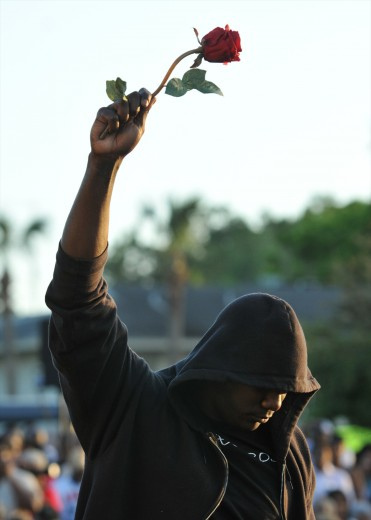
Signs dictate action. If we see a green traffic light, we know that means we can go. If we see a "please seat yourself" hanging board upon walking into a restaurant, we know that we don't need to wait for the maitre d' to assign us where to sit. Visual images, in this way, dictate the world in which we live -- enabling us to derive an imagined meaning from a symbol.
Is this a good thing, or a bad thing? Of course, signs play an important role in regulating society to function in sync. It probably would not be safe for people to travel via car if there were no traffic lights directing them, allowing us to move in conjunction with one another. However, most visual images encompass not just rules, but manifested ideas and identities. Historically, basic signs were used to institutionalize racism in everyday life; reading the words "whites only" created a hegemonic discourse that was much more impactful than merely segregating people based on racial difference (though of course, it did this too). Rather, those two mere words placed in a communal space embodied an ideology, culture, society, and history that as Americans, we are still faced with how such a sign enables us to understand each other and ourselves.
I raise this point to address how it pertains to the tragic death of 17-year-old, Trayvon Martin on Feb. 26 of this year. Shot in an act that was called self-defense by the gunman, George Zimmerman, Martin, a young, African American boy was killed on his walk to his father's in a gated community in Sanford, Fla. In this case, it is most apparent to understand how images have played an instrumental role in determining why such violence was ensued against something and someone so seemingly innocent.
Racial discrimination has been an undeniable consideration in this current event. However, other physical markers, beyond just the color of Trayvon's skin, have become widely dependent to the public and media's rampant investigation. Trayvon's sweatshirt "hoodie" has been a frequent topic of conversation. The Skittles and Arizona iced tea Trayvon had in his hands as he was shot have been symbolic images used in the protests that have occurred to bring attention to this heinous crime. So what has to be taken from all of this is, what do clothing and candy have to do with a second-degree murder trial?
And it is not these objects in tangible form, but rather, what they mean to us as a society, that are used to make sense of this scenario, as Zimmerman describes it. The "hoodie" worn by Martin has allowed many to argue that perhaps, Trayvon was considered dangerous for his attire can be associated with a gang-member or hood. Contrastingly, the fact that Martin had candy and a beverage in his hands, and not a gun, knife, or any other dangerous weapon, has led his supporters to defend his wholesome innocence and youthful persona. It supports the notion that this was entirely a hate crime, a product of racial tension and anxiety still lingering in the world.
Ultimately, as it goes in America, a jury will ultimately decide what happened on the night Trayvon Martin was found dead. They will piece together all the evidence provided and images, and put together a narrative that we can only hope, will act in the name of equality and justice. However, we, as an active society and community must ask ourselves what all these signs and symbols really exhibit. Perhaps, it is time we read them and not just acted in their accordance, but also, took the time to consider what it is signs are telling us to do.
This post originally ran on ConsiderOnline.org.